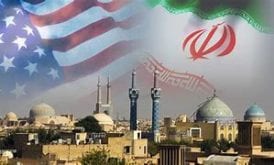iranintl – The Biden administration is set to move towards a reduced role for the US military in Iraq, amid continuing attacks by Iran proxies on American interests in the region.
In a statement published Thursday, secretary of defense Lloyd Austin confirmed that the US-Iraqi Higher Military Commission (HMC) will convene meetings in the “coming days” to discuss new ways of cooperation in the post-ISIS era.
The statement has been widely read as the beginning of the end of US military presence in Iraq, despite the Pentagon’s categorical rejection of that reading.
“Let me be clear, the HMC meeting is not a negotiation about the withdrawal of US forces from Iraq,” Pentagon’s deputy press secretary Sabrina Singh said in a briefing Thursday. “The United States and the coalition are in Iraq at the invitation of the Iraqi government to fight ISIS. The HMC will enable the transition to an enduring bilateral security partnership between the US and Iraq.”
The timing of the announcement has led many to believe it is related to the regional crisis following the Hamas’ attack on Israel and the Israeli onslaught on Gaza.
Since last October, American bases in Iraq and Syria have been targeted more than 150 times by Iran-backed groups, and Tehran has repeated its threats that the ‘Resistance Front’ will evict the US from the region. Shiite groups in Iraq supported by Iran have also intensified their calls for all foreign forces to leave the country.
It is hard to tell if that demand has forced the Pentagon announcement – or if it would be on the agenda during the coming HMC talks.
Austin’s statement lacks clarity and detail, which leaves it open to interpretation. It speaks of “transition”, “process”, “timeline”, and “evolving” relationship, all of which can point to a strategic shift from direct military presence to security cooperation. But any shift, according to the statement, would be contingent on “ISIS threat”, “operational requirements”, and the “capability” of Iraqi forces, which can always be used to justify continuous US military presence in Iraq.
The Iraqi party, however, seems to be clearer about its negotiation objectives.
The aim, according to a statement from Iraq’s foreign ministry, is to come up with a “clear timeline determining the duration of the presence of the international coalition advisors in Iraq, initiating a gradual and thoughtful reduction of their presence on Iraqi soil, concluding the military mission against [ISIS], and transitioning to comprehensive bilateral relations with coalition countries.”
The Iraqi parliament has voted to oust American forces from Iraq. But the Biden administration says it is yet to be asked to do so formally.
Any negotiation between the Iraqis and the Americans will be closely watched from Tehran – and by Assad and the Kurdish forces in the area. A full withdrawal, if it ever happens, would likely put the Iranian regime in a much stronger position than it already is in Iraq and Syria.
Earlier in the week, it was reported that the Biden administration may be considering a full withdrawal of American troops from Syria in 2024. That report was also swiftly rejected by the Pentagon as “erroneous.”
There are about 2,500 American troops in Iraq and about 900 in Syria. The numbers are small when compared to the numbers in the early years after the Bush-led invasion of Iraq. At its peak, there were almost 170,000 US forces on the ground in Iraq.
 Shabtabnews In this dark night, I have lost my way – Arise from a corner, oh you the star of guidance.
Shabtabnews In this dark night, I have lost my way – Arise from a corner, oh you the star of guidance.



